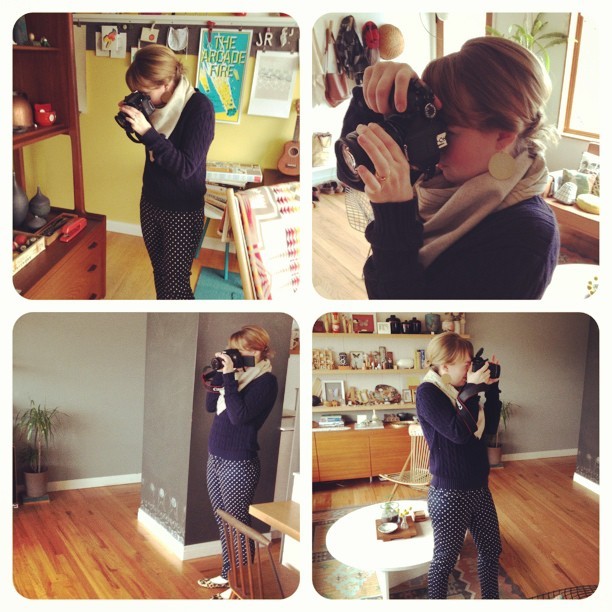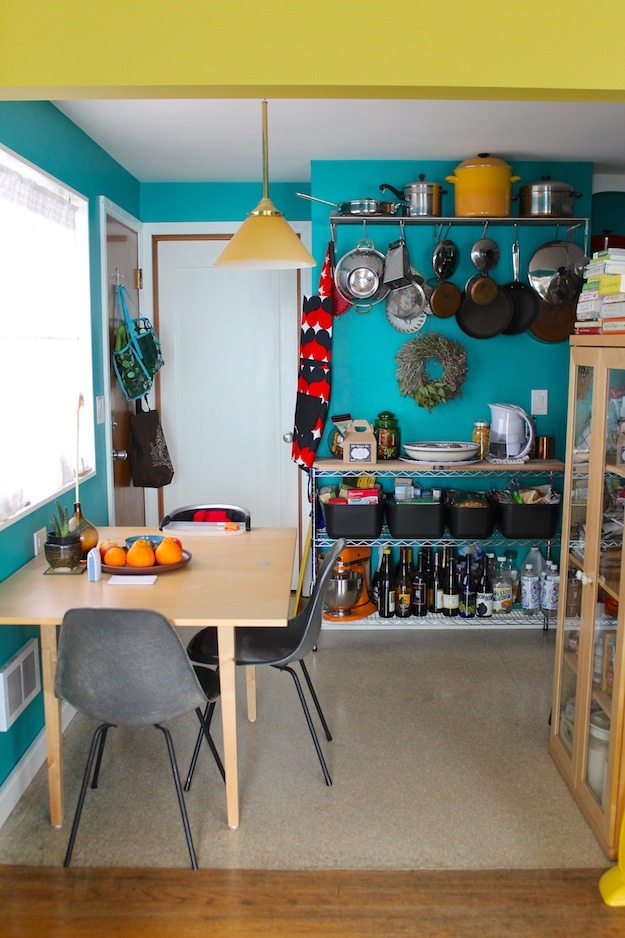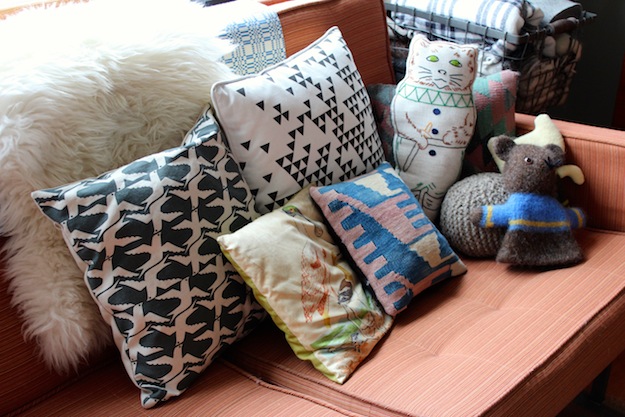
Photo of me shooting via our Instagram
1. Turn off the lights. If you don't have lots of amazing lighting equipment, an odd lamp on here and there will sometimes inhibit your editing capabilities due to the contrast. If the room is pitch black, obviously a light is necessary, but try on and off and then see what you come up with.
2. Don't be afraid to get into weird positions. I always ask the home's occupants if I can sit on their furniture, lay down on their bed, or squish into a corner to get the best shot possible.
3. Take some candid shots. Not everyone is a professional model, so sometimes staged photos can prove to be dull or rigid--candids can save you! Capture them in their element, working or chatting. (Not eating--that's just not fair!)
4. Take wide shots of each room from several angles and lots and lots of detail shots. People want to see the "lay of the land" so to speak, but really enjoy seeing the tiny details that make a house a home.

A wide shot of a Chika Eustace's lovely kitchen in one of
my upcoming House Tours for Apartment Therapy
5. Watch for shadows and reflections! These can take the viewer out of the experience.
6. Don't be afraid to fix things. Cat walked on the bed? Straighten the bedspread. Make the space look as wonderful as it can.
7. Try to capture the homeowner's personality. Are the worker bees? Fun-lovers? Take photos that illustrate those traits. Collections can truly set the stage--what are they reading? What tools are in their offices?

A lovely handmade and unique pillow collection in Jean Lee's adorable living room in one of
my upcoming House Tours for Apartment Therapy
8. If a photo doesn't work (sometimes bathrooms are impossible with amateur equipment) throw it out. Don't publish photos that don't work.
9. Use Lightroom (my recommendation) or Photoshop to make sure the White Balance and shadows are under control. If one of these doesn't look right, the photo is immediately subpar.
10. If you aren't sure how to use the photo-editing programs you have, watch Youtube or Vimeos to learn tricks of the trade. There's always room for learning!
11. Slow down. The slower you are, the better the photos are, and you won't miss anything! It feels intrusive to take your time in someone's home, but they want it to look great as much as you do (if not even more!)
12. Check and recheck your photos and camera settings. I learned this lesson the hard way on poor Blair Stocker's home tour. I shot the whole tour on a bad setting and had to reshoot. Be careful!
Images by Andie Powers for Apartment Therapy








